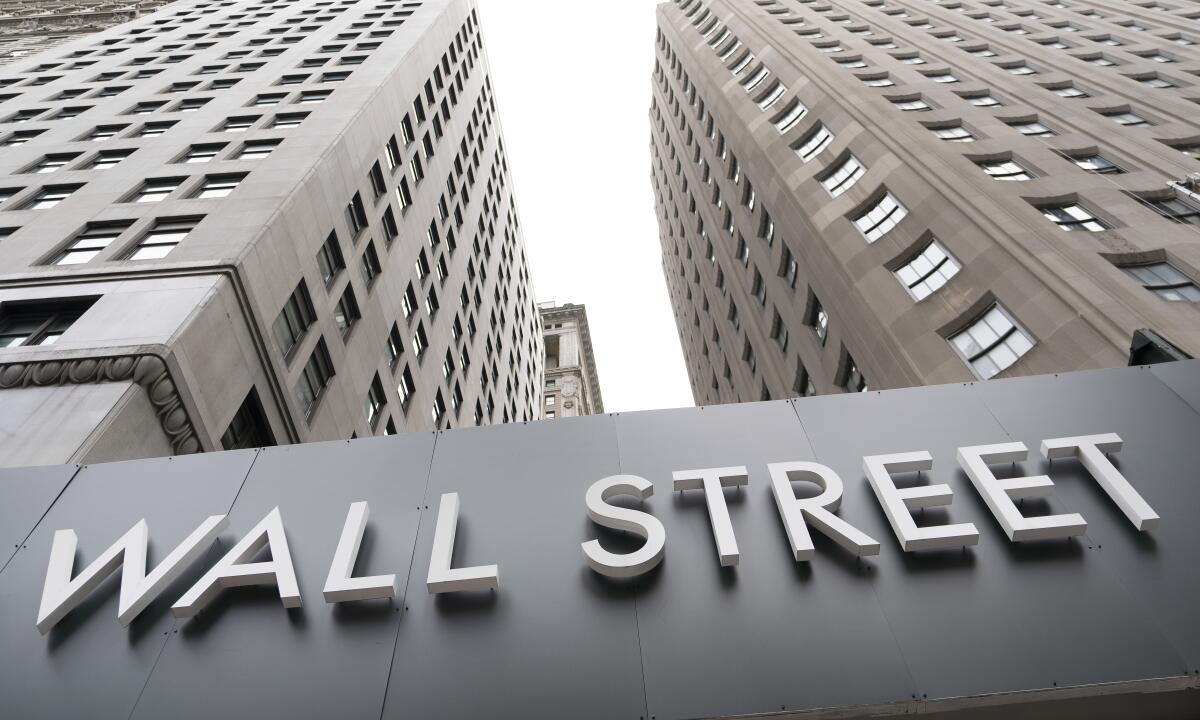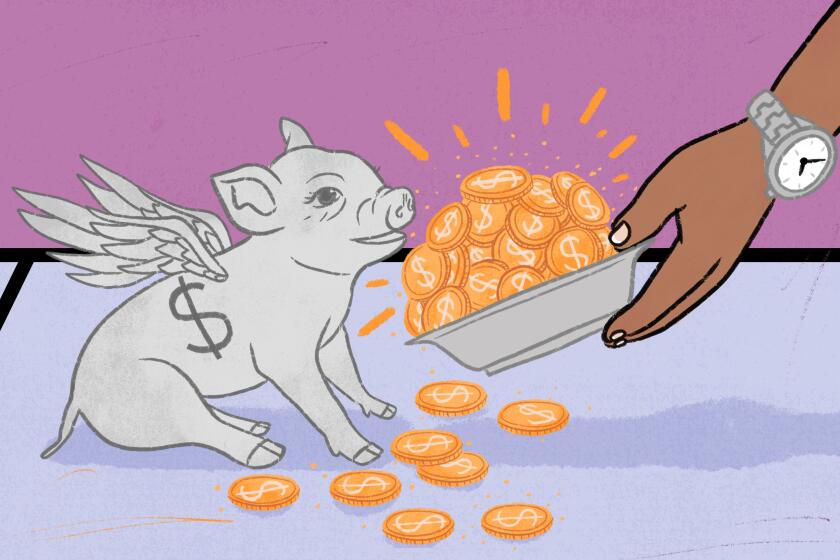Wall Street climbs ahead of election day, inflation data

- Share via
Stocks rose Monday on the eve of election day as Wall Street looked ahead to the benefits of a possibly split government in Washington, though trading is likely to stay bumpy in a week full of events that could shake the market.
The Standard & Poor’s 500 index rose 1%, while the Dow Jones industrial average gained 1.3% and the Nasdaq composite added 0.9%.
Analysts say many investors seem to be making bets that Republicans will take control of at least one house of Congress. With a divided government, gridlock is more likely than big, sweeping policy changes that could upend tax and spending plans. And historically, when a Democratic White House has shared power with a split or Republican Congress, stocks have seen stronger gains than usual.
“The conventional wisdom that the stock market likes political gridlock is supported by the historical data in this instance,” said Lori Calvasina, head of U.S. equity strategy at RBC Capital Markets.
Of course, that means that a better-than-expected performance by Democrats in the midterm elections could hurt stocks. Investors may fear that emboldened Democrats in such a scenario would push for increased spending to help the economy. That in turn could be a signal that the Federal Reserve would have to hike interest rates even higher to get inflation under control.
A stolen wallet precipitates a reporter’s years-long fight against identity thieves — and a system that doesn’t care and won’t help.
A Republican win would also introduce its own risks. It could again encourage Republican brinkmanship around the nation’s debt limit and threaten another government shutdown, according to strategists at Morgan Stanley.
Either way, markets may have to wait a while to get clarity because of the process to count votes that came in through the mail.
In the meantime, Wall Street is looking ahead to a report scheduled for Thursday, when the U.S. government will show how bad inflation was across the country last month. And that will influence what’s been the main driver on Wall Street this year, much more than politics: what the Fed does on interest rates.
Economists expect the report to show that the consumer price index was 8% higher in October than a year earlier, which would be a slight slowdown from September’s 8.2% inflation rate.
A fourth straight month of moderating inflation from June’s 9.1% rate could offer some relief. Such a trend line could also give the Fed leeway to loosen up a bit in its campaign to hike rates aggressively to force inflation lower.
A new report released by Sen. Elizabeth Warren shows more scammers taking advantage of Zelle users, and that banks often don’t reimburse customer losses.
The Fed has said that it may soon dial down the size of its increases to half a percentage point, after pushing through four straight mega increases of three-quarters of a point. Higher rates put the brakes on the economy by making it more expensive to buy a house, car or anything else on credit.
But too-high rates also raise the risk of a recession, while also dragging on prices for stocks and all kinds of investments. And rate hikes take a notoriously long time to take full effect, though economists debate exactly how long that is.
“The lags are different each cycle and for different reasons, and we just don’t know when the tightening will have the impact that was intended,” said Keith Buchanan, portfolio manager at Globalt Investments.
“It boils down to one question,” Buchanan said. “What impact has the tightening from the Fed had on inflation?”
Even though the Fed has said that it may soon pare back the size of its increases, it is still warning markets that it may ultimately hike rates higher than expected because of just how stubborn high inflation has been. The Fed has already hiked its key overnight rate to a range of 3.75% to 4%, up from virtually zero in March, and more investors are expecting it to top 5% next year.
Don’t let the bear market keep you from retiring. But there are a bunch of other financial and emotional factors to consider before taking the leap.
Monday’s gains for Wall Street came despite a shaky showing for its most influential stock. Apple rose 0.4% after dropping earlier in the day. It had warned customers that they’ll have to wait longer to get the latest iPhones after anti-COVID restrictions were imposed on a contractor’s factory in China.
Speculation has been rising recently that China may move away from its business-damaging zero-COVID policies. If the world’s second-largest economy did, it could provide a boost to a global economy facing wide-ranging threats as central banks worldwide hike rates because of high inflation.
Besides the election, inflation and China, earnings reports from U.S. companies are also pushing stock prices to swing.
The reporting season for summertime profits is roughly 85% done, and S&P 500 companies are on track to deliver growth of a little more than 2%. That’s close to analysts’ forecasts, though several companies have been warning of tougher times ahead as inflation remains high and the economy appears increasingly fragile.
Analysts are now forecasting a drop in S&P 500 profits for the final three months of the year of nearly 1.5%. They had been forecasting growth of 4% at the end of September.
Bond yields rose. The yield on the 10-year Treasury climbed to 4.21% from 4.16% late Friday. The yield on the two-year Treasury increased to 4.73% from 4.66%.
The S&P 500 gained 36.25 points to 3,806.80. The Dow rose 423.78 points to 32,827.00, and the Nasdaq climbed 89.27 points to 10,564.52.
More to Read
Inside the business of entertainment
The Wide Shot brings you news, analysis and insights on everything from streaming wars to production — and what it all means for the future.
You may occasionally receive promotional content from the Los Angeles Times.













